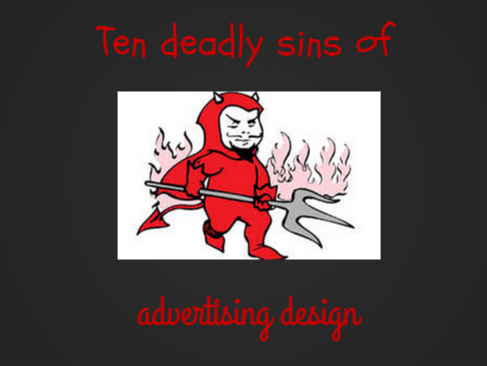We found advertising works the way the grass grows. You can never see it, but every week you have to mow the lawn. Good thought from the Nielsen Company. Do you occasionally read or watch ads? We would say people don’t read ads. However, they do read or watch what interests them. So if you are going to create compelling and persuasive advertising, you are going to have to create something interesting that will help consumers want to read. And you absolutely must avoid the ten deadly sins of graphic design advertising.
Check out our thoughts on creative marketing.
And, oh by the way, what you write must be more interesting and entertaining than the millions of other advertisements out there. Now that is a daunting task, isn’t it?
Daunting is not a strong enough description, is it? According to Nielsen, there are 27,000,000 pieces of content are shared each day. And Statistic Brain says that our average attention span has dropped from 12 seconds in 2000 to 8 seconds – one second less than a goldfish!
Related: Some Great Story and Storytelling Examples to Study
We check our phones 150 times per day. We check our email up to 30 times an hour. And the amount of information in the world continues to double every 18 months.
All this available information and data is creating a battle for customer attention between brands, publishers, and every one of us who creates content. But more importantly, it’s forcing businesses to think and act like publishers and creative designers. What about you?
Do your ad designs have the power to encourage the right sort of conversations? We’ll discuss this point in a bit.
It has been said that advertising is the price to be paid for being unremarkable. That may be true, but I have noticed, despite the growth in online marketing, that even remarkable businesses also advertise the old fashion way. It is an essential component of your marketing campaign, for awareness or consumer education of your value.
If you are going to be successful in advertising, you absolutely must avoid these ten deadly sins of advertising design:

Graphic design advertising … too many choices
Ever heard of Hick’s law? This law states that the time required for a customer to make a decision is a direct function of the number of available choices.
Too many choices are not a good design as they make decisions more difficult. And that is not a good idea, is it?
Not keeping promises
This sin is closely related to the one on lack of trust. When you make a commitment to a potential customer in an ad, and then don’t deliver, you most often lose the client for good. Not a desirable outcome is it?
Visual distractions
Abstract or conceptual visuals tend to distract viewers. People prefer symbolic language and images that relate to the senses. People are far less receptive and responsive to language and images that relate to concepts.
Life is experienced through the senses and using symbolic language and images that express what people feel, see, hear, smell or taste are easier for people to understand
Sins of advertising design … too much design
Don’t use every inch of white space because you can. Leave some “breathing room” so people can digest your message. We believe the more, the better.
Remember people will take away only one or two things from what they see. The clutter of a design keeps them from spotting the takeaways you desire.
Lack of trust
Customers more easily remember companies that they know and trust. Focus your ads on either getting known to start the trust building or conveying memorable messages. Doing both at once is not a good practice.

No call to action
The whole point of the story in advertising is to deliver the desired call to action efficiently. If the audience does not clearly understand the call you want to action after seeing the ad, then you are missing the real opportunity.
Graphic design advertising … often too ambiguous
Marketing or advertising, you need to create information that your customers find interesting and worth talking about and remembering. If the information is obscure it certainly won’t be remembered.
Showing no originality
Don’t present material that overwhelms people with sameness. Unique messaging grabs attention much more readily. You only have a few moments to communicate, so use powerful, focused and straightforward words – such as ‘free,’ ‘unbelievable,’ etc.
No consistency
Being inconsistent means your information is not prioritized. You should choose information that’s most important and make it your primary element of the ad. Every piece of information in your ad should be weighted according to its importance.
Also, the idea is to make things more user-friendly by an aesthetic consistency of style and appearance.
Too much text
When you have prioritized information in your ad from most critical to least, start stripping away the least important text. Remember the best you will do is get readers to remember 2-3 things. Too much text and the readers quickly move on, remembering nothing.

